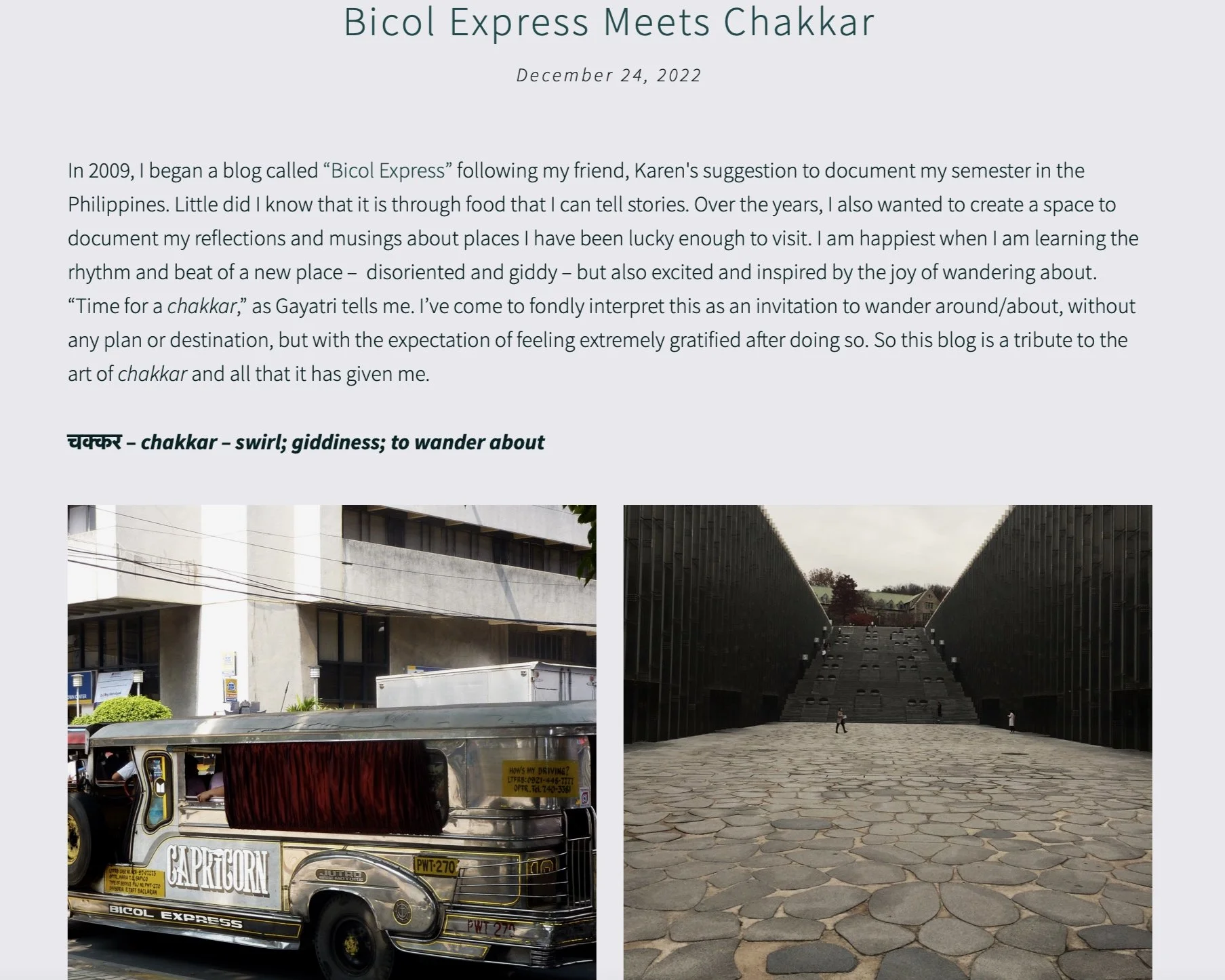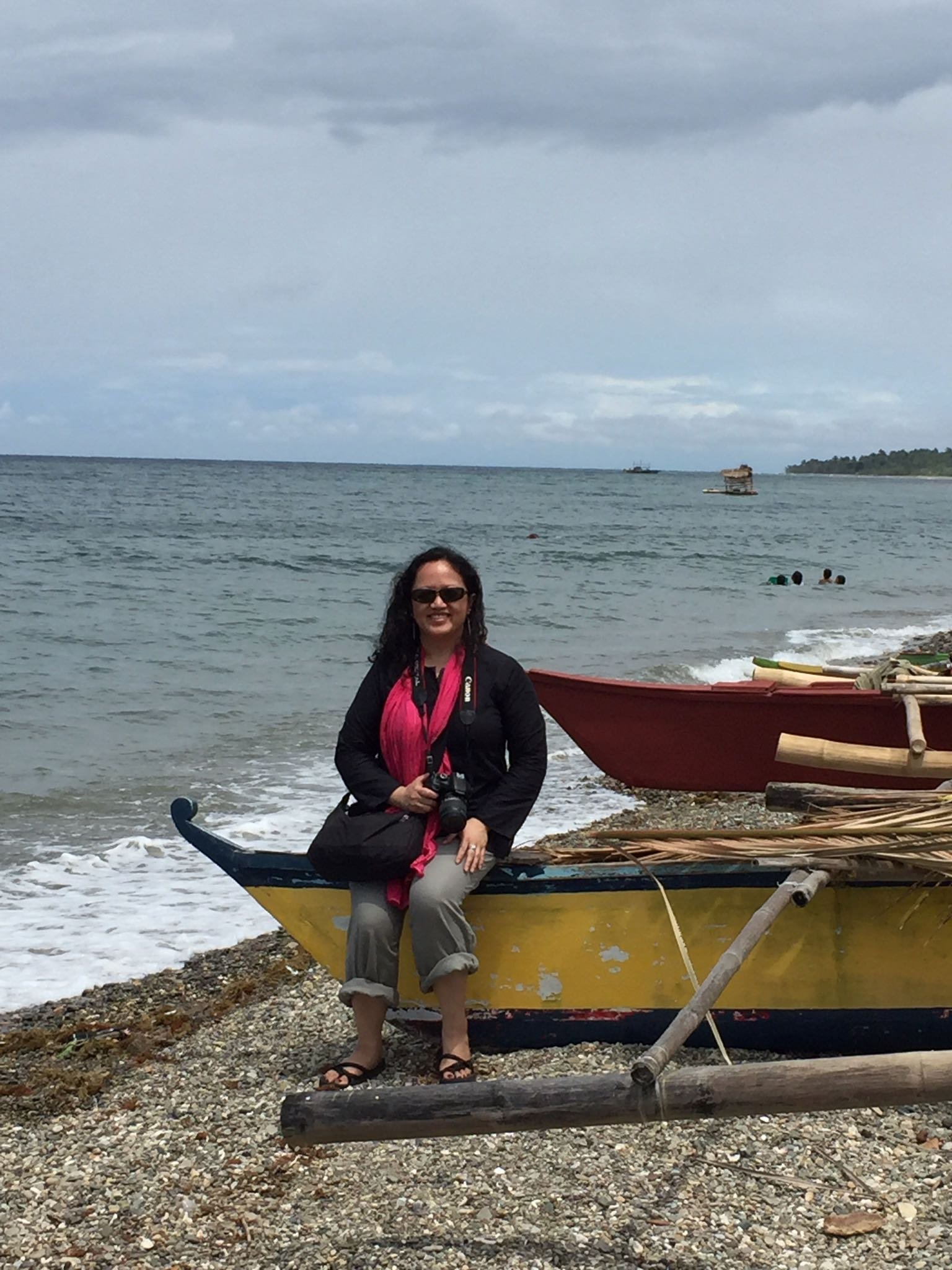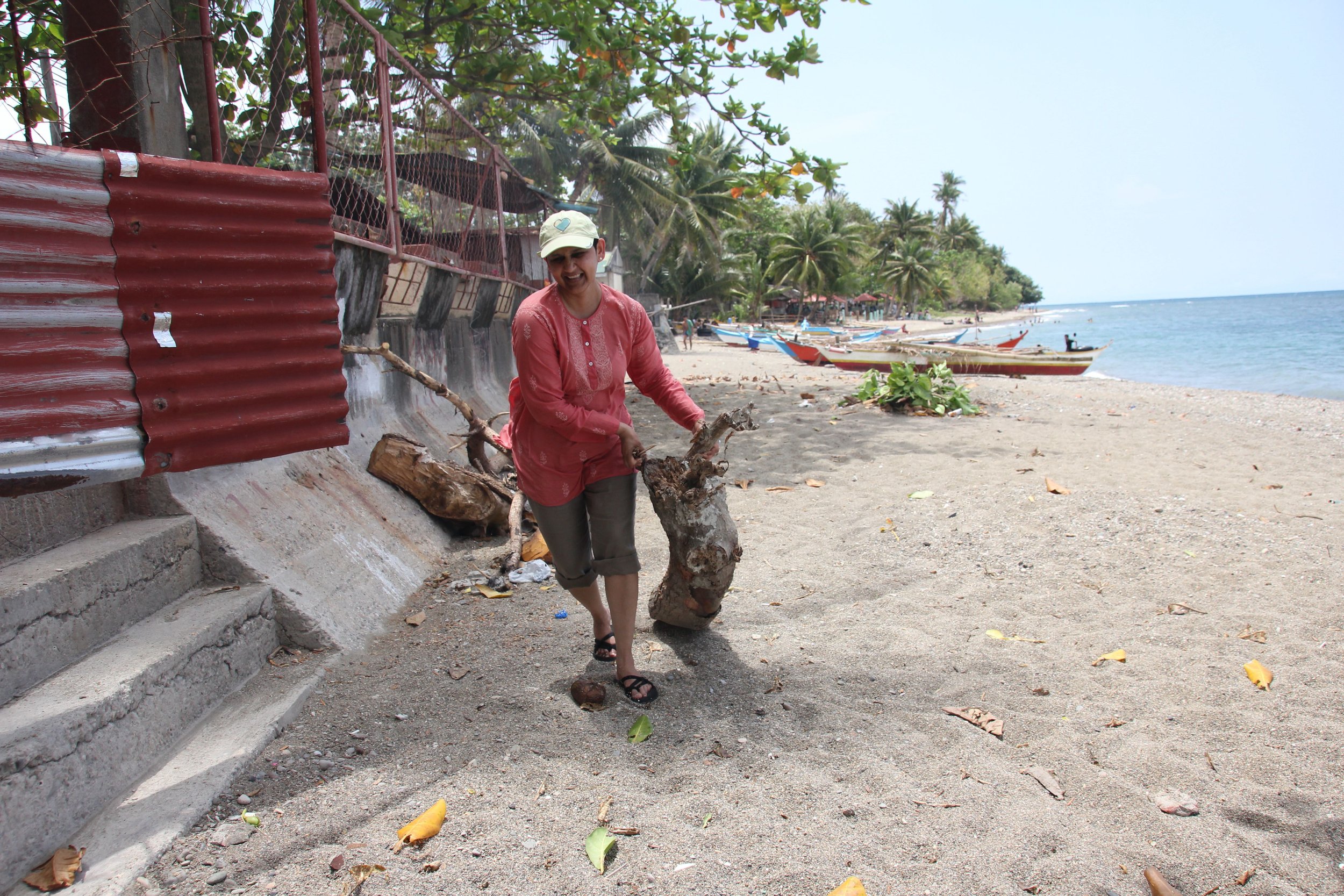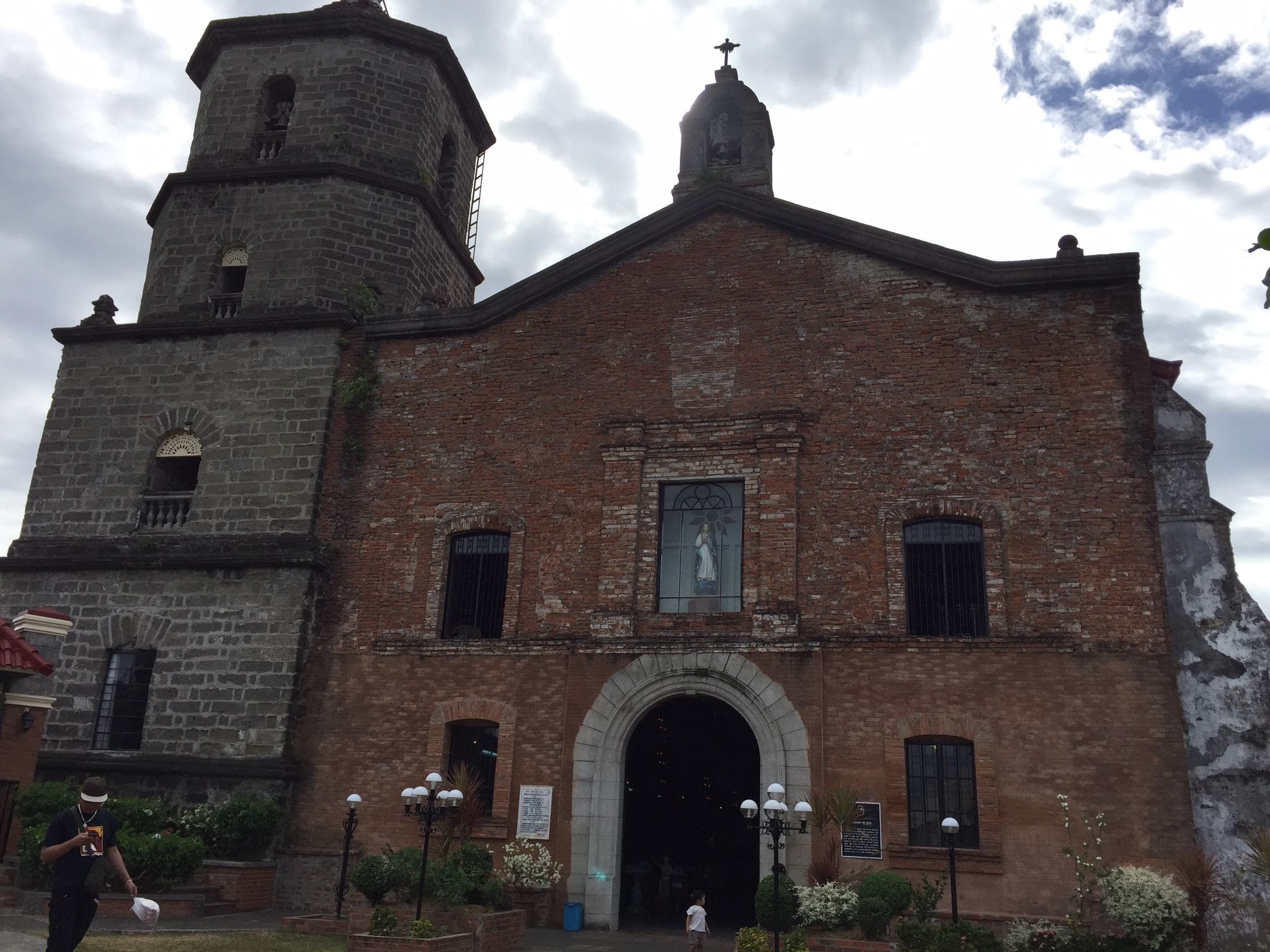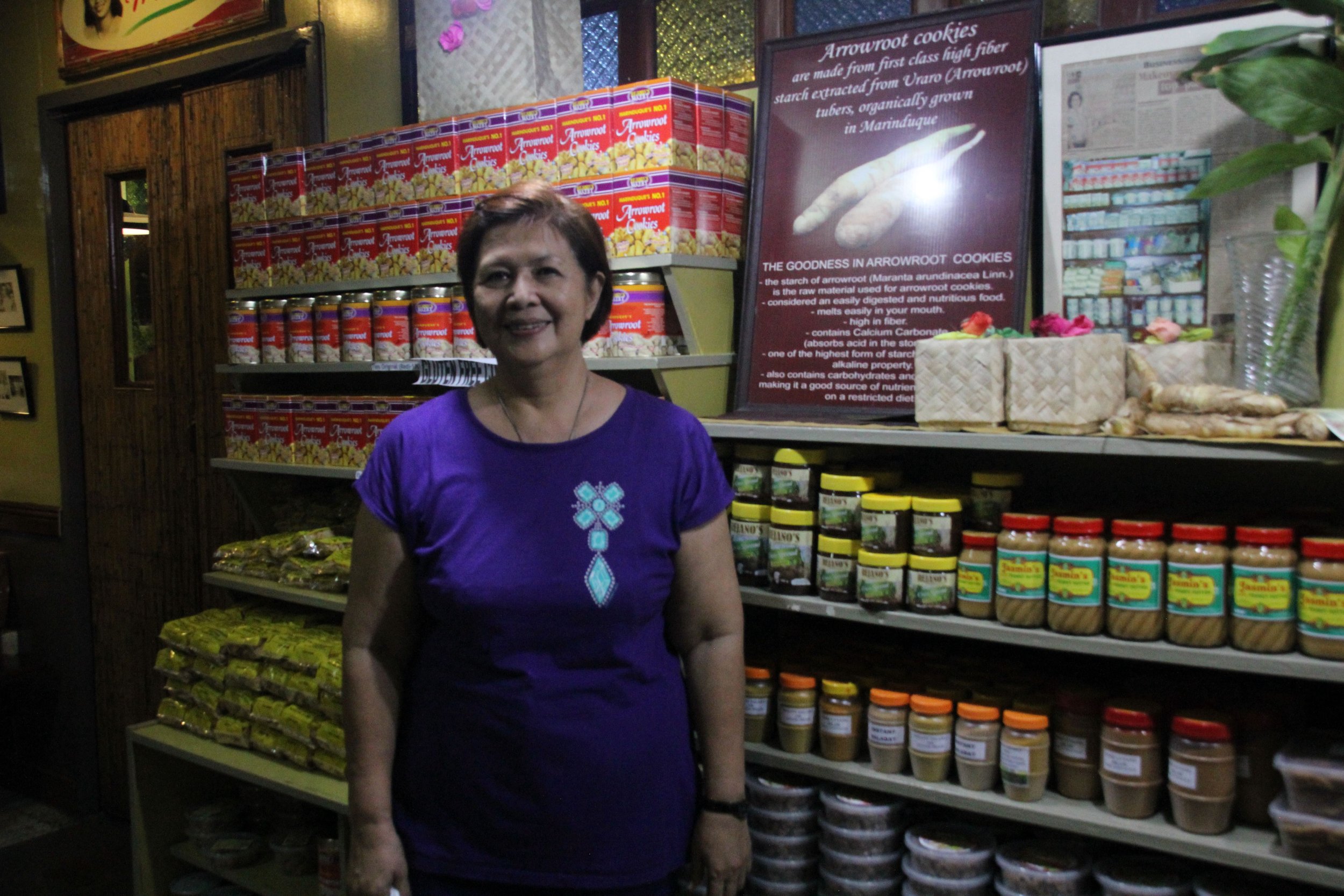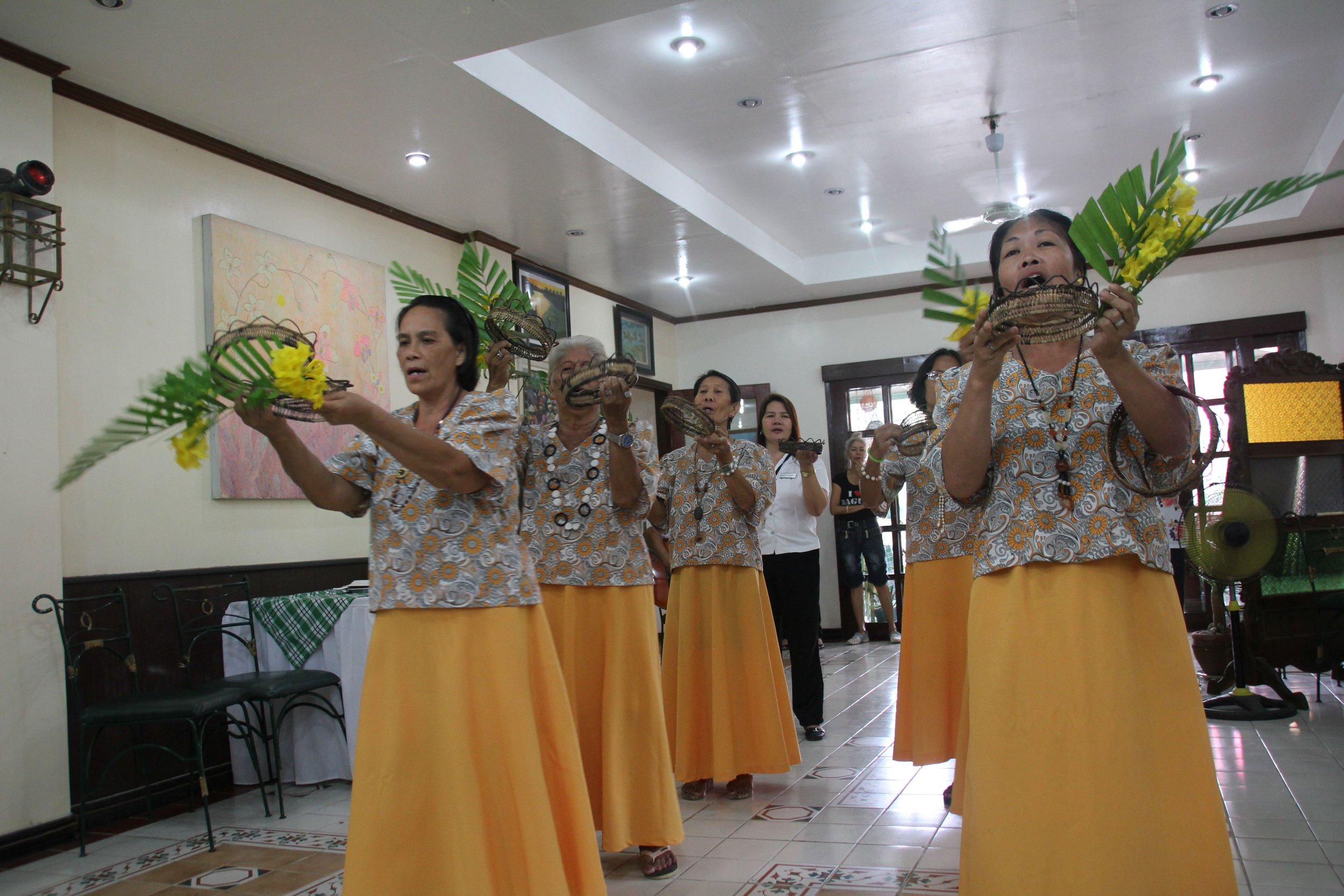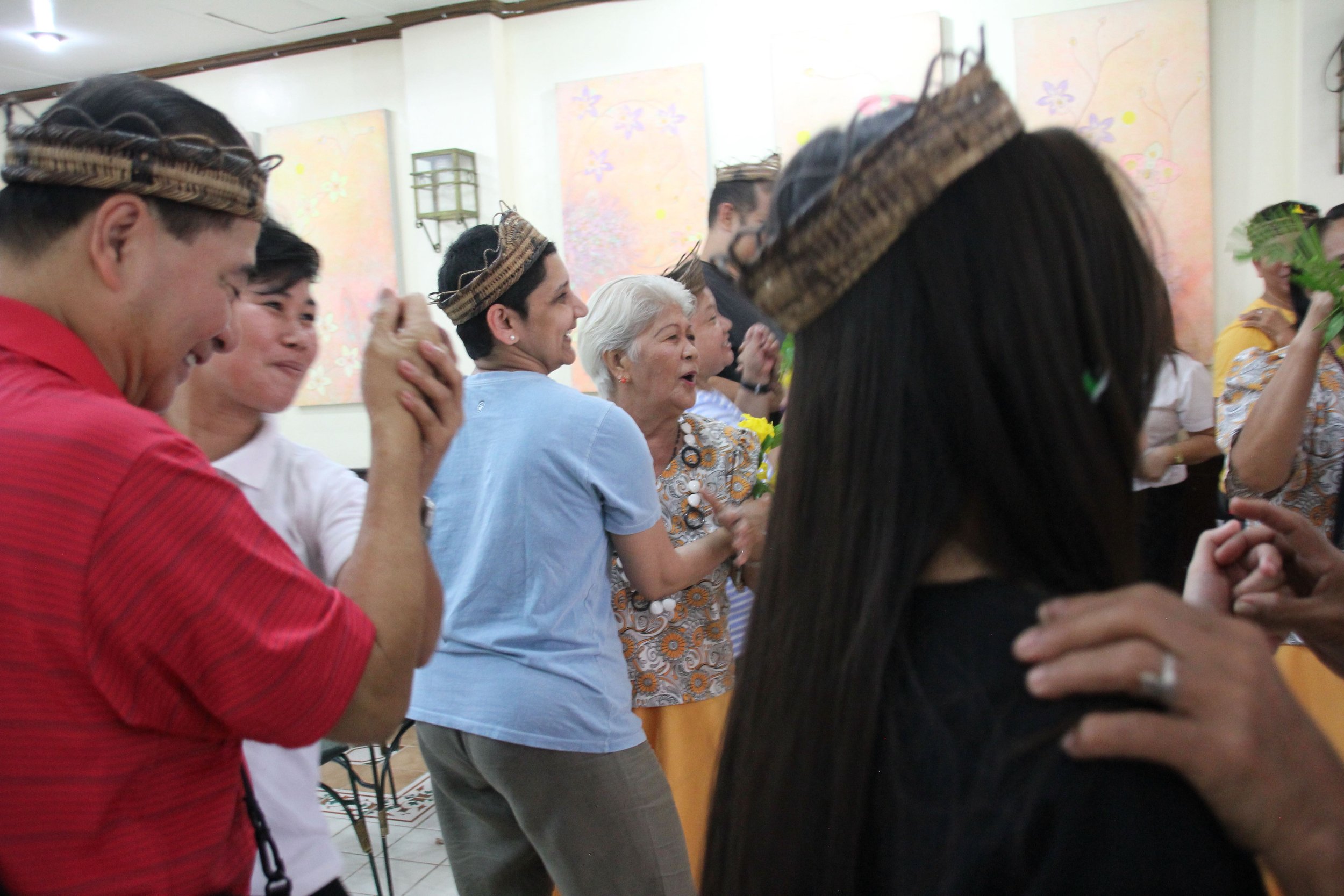I remember looking out from the window of the house onto the lush greenery of fields of rice paddy laid out in grid formation. Most times, it didn’t take me very long to go from looking out of the window to running out onto those fields. The paths that connected the fields were narrow and slippery, but that didn’t stop me from running across them. The water in the fields was shallow and muddy, and I remember seeing snakes in those muddy fields. But that didn’t stop me either, even though I was more fearful of the snakes than getting mud on my feet. I remember how incredibly exhilarating it was to run through those fields toward the bahay kubo (Nipa hut – made of bamboo and palm leaves), the only house you could see for miles. This – the paddy fields, the bahay kubo - the bukid (farm) in Salapungan (a baranggay or village in the municipality of Candaba within the province of Pampanga) is where Tatang (my grandfather) farmed.
This particular bahay kubo belonged to “Indang Inga” and her husband, “Bapang Piling.” Bapang Piling is Tatang’s brother. He and Indang Inga were the parents of Meding - the woman who helped raise me from when I was born until 4 years of age so that Ma could go back to work. I called her “Dada.” I have fragmented recollections of this period, but I do remember the bahay kubo where we stayed when Dada brought me to visit her family - the roof I looked up at night made of dried grass, which I now know must have been Cogon grass, the bamboo floors that were so cool to the feet. If I looked hard enough and peeked through the crevices, I could see the silong (the ground underneath the house) when I slept on those floors. I remember touching the walls that felt so soft to the touch and wondered why they felt and looked like the banig (bamboo mats) we slept on. But my favorite place in the bahay kubo was the big window that faced those fields – I loved how a big bamboo stick would pry open the window and then you could just look out and see everything and everyone. I could wave to the people coming and going, every day. I saw the magsasaka (farmers) and the kalabaw (carabao) hard at work tilling the land. I saw the transplanted rice paddy mature into tall stalks of green that swayed in the wind. But this was the same window that I was told to stay away from at night, after the sun set, because of fears that the flying manananggal (half-bodied vampires that come after young children) would come after me. That’s why there were cloves of garlic hanging by the window – to ward them off.
To be honest, in those dark nights, lit up only by kerosene lamps, I was not so scared of the manananggal but of going to the outhouse at night. The outhouse was a few meters away from the house. It was propped up on long stilts and to use it, you needed to climb up what were then (for me) steep steps made of bamboo. You reached the top of the steps, entered a space with a hole in the middle. Then you squatted and positioned yourself above the hole, hoping that the ordeal would be over soon. I dared not look down. Or if ever I did, I have forgotten – or blotted out – what I had seen. When I was old enough to walk up the steps (maybe once I was 4 years old?), I remember someone – often Dada, or one of her family members - walking me up the steps to make sure I did not fall through, and then waiting for me until I finished. While up there, my biggest fear was that I would fall into and be swallowed up by the hole.
Dada’s family treated me like their own. I remember a lot of laughter. They seemed very particular about making sure I didn’t get bitten by mosquitoes or get hurt playing outside. I remember seeing photos of myself around their house. One photo that caught my eye was of me wearing super big sunglasses, No smile. Was that really me? It seems that most of my photos at that age were pictures of me with a deeply serious face… or a face that is about to cry. I was a crier, I was told. Still am.
Me and the big sunglasses
Indang Inga had a similar serious face. She hardly smiled. So, when you saw her, you made sure you followed what she told you. She was a formidable figure. One of the things I remember is that I hardly saw her hair. She always had her head and hair wrapped with a cloth. I probably would not even recognize her without this head covering. She stayed in an area near the house where the fish, meat, and vegetables were prepped, where we did the laundry, where we bathed, and where she made her “special drink.” I remember seeing her stand over a steaming pot that had a very distinctive and unfamiliar scent. She would pour herself a cup of the liquid from this pot and sip it with purpose and enjoyment. I used to marvel at how all the adults seemed to drink this drink all day – once in the morning, then during merienda (snack), and then sometimes another cup at night. She and all the adults seemed to love this drink so much. I saw people come to the house and be offered this drink. I, too, wanted to have a taste of it, but was told I was too young to drink it. I was later told it was kape (coffee). It did not have sugar or milk so I was warned that it would taste bitter. Nevertheless, I still wanted to take a sip. Then someone finally asked me if I knew the story behind Indang Inga’s coffee. Her coffee was apparently the best in the bukid. People would intentionally come to the house to have Indang Inga’s coffee. Why? The secret is in her preparation, I was told. People claimed that she would pour the coffee through a piece of worn sock, thereby giving it a unique taste. Yes, she used socks to filter the coffee! This was the secret ingredient. “Can’t you smell it,” they asked me. Stunned, I just shook my head. My imagination went wild. Whose socks were they? Did she use Dada’s socks? Or Bapang Piling’s socks? Or Uncle Eddie’s? (Dada’s boyfriend then and later, husband). Whether it was true or not, it was enough for a four-year-old to stop asking for a taste of this “special drink.”
Indang Inga became a giant in my imagination. I started to wonder whether she had other secret ingredients in her cooking. She was a phenomenal cook. Whenever we visited Tatang during fiestas, Indang Inga seemed to be one of the main cooks in Tatang’s house in Candaba. When there was a town fiesta, the whole town celebrated by opening their homes to everybody and feeding them with all their specialties. Every house tried to outcompete the other. Who cooked the better leche flan? Who had the crispier lechon? Did you taste that morcon? Did you see her fruit salad had queso de bola? Or who had the best buro (fermented catfish)? It was only during birthdays and fiestas that I saw my grandfather’s house use the formal dining table where the food was laid out. It was the only time that Auntie Paz (my dad’s sister) would proudly make her special jello which she put in a silver fish mold. In my mind, I was eating fish jello and found that so exciting. I loved how it sat on the table, jiggling a bit – almost like a real coy fish swimming in a pond. Indang Inga’s leche flan was also famous. I wondered – did the flan also have a secret ingredient? What made it so creamy, malinamnam (tasty), and silky? Was it something about the brown color cigarettes she was rolling so neatly and then smoking while waiting for llanera (a type of pan) after llanera of leche flan to steam in a giant palayok? The cigarettes they smoked looked like sitaw (long bean) that had turned brown. Its smoke had a sweet smell, but my cousins told me that they would turn your teeth brown. Is that why Indang Inga hardly smiled?
Indang Inga’s presence allowed my mind to wander, imagine, but also believe in the unbelievable. After my father passed away in 1995, Ma, my siblings, and I went back to the Philippines. We visited the bukid. But nothing was how I remembered it. There was cement everywhere – in the structures and the ground we walked on. The big open window in Indang Inga’s house was now a window with framed metal grills. Additional cemented rooms were built around the bahay kubo. There is now a toilet inside the house. The place where Indang Inga used to make her sock coffee now has a cement foundation. But Indang Inga looked the same and had barely aged. She still had her head wrapped with a cloth. She still stared with those piercing eyes. We still did not say much to each other but when she saw us, she smiled. I didn’t ask about the sock coffee or the leche flan. Now that I am writing this, I am realizing that maybe the secret ingredient was something I knew all along. Maybe the secret ingredient was Indang Inga, the bukid, and the possibility of stories that filled our minds.
Photos taken in 1995 in Salapungan, Candaba, Pampanga
In memory of Remedios (Meding) Guevarra Laxamana who passed away on August 31, 2015 in Salapungan, Pampanga.
